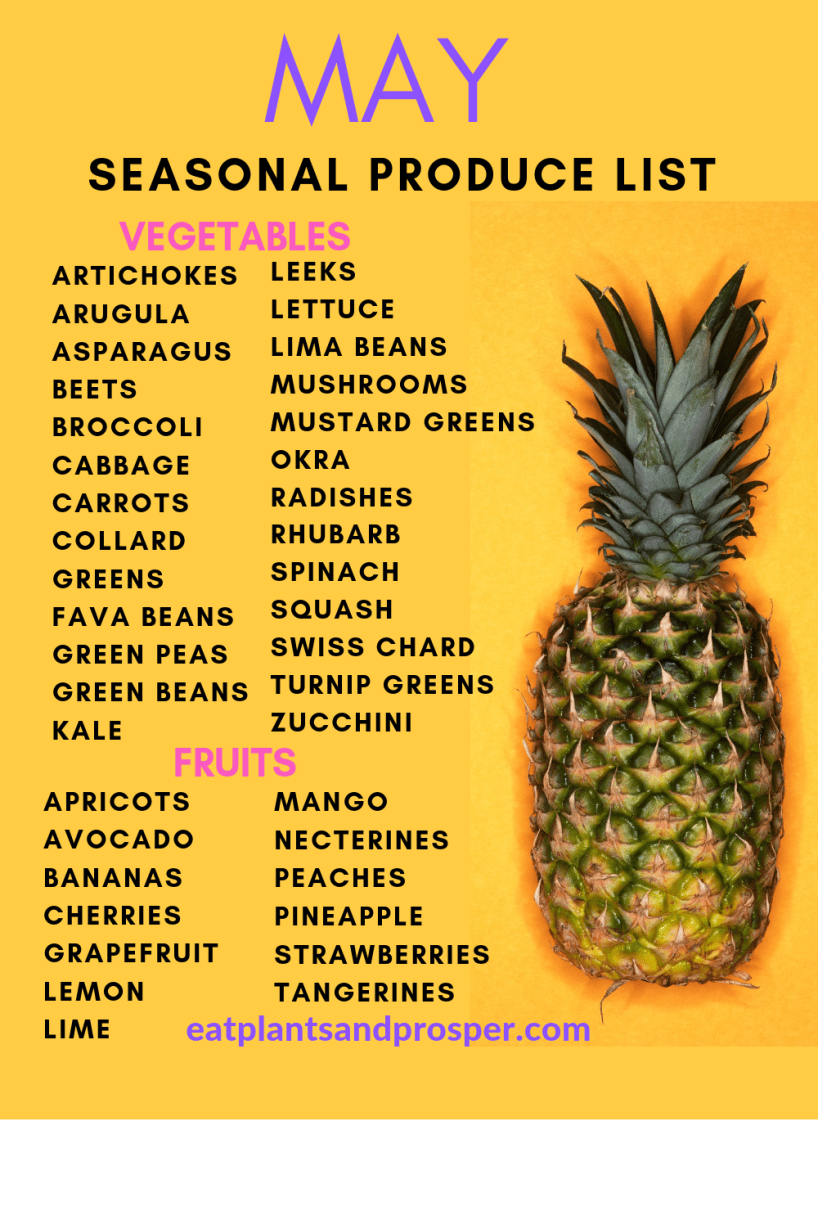3 Easy Tips on How to Eat Plant-Based on a Budget
May 08, 2019
If I had a nickel for every time I heard, “I can’t afford to eat plant-based,” I would be on the Forbes list next to Kylie Jenner.
Unfortunately, nutrition (particularly wellness information) is surrounding by a ton of misinformation. The misconception that eating a plant based diet is too expensive simply isn’t true.
You CAN eat healthy, plant-based, vegetarian or vegan on a budget. And it isn’t hard to do it. I’m going to give you 3 simple tips to keep greens in your belly AND in your pocket.
1. Eat Seasonally
Eating seasonal produce is the absolute best way to not only save money but to also ensure premium quality and taste of your fruits and veggies.
Ever eaten a strawberry out of season? They can be bitter and acidic. Now think back to enjoying strawberries during the warmer months. Juicy, sweet and delicious, right? No contest. Seasonal produce tastes better and it’s cheaper. That’s a win/win.
The list below highlights seasonal produce for the month of May. Be sure to enjoy your favorite produce that will be at it’s peak this month. And why not try something new? My goal each month is to pick a few fruits and veggies that I typically don’t cook with much and create recipes for them. I’m thinking lima beans, okra and artichokes…stay tuned for recipes!
 There are almost 40 fruits and vegetables on this list. You could try something new everyday or stock up on what you love. Whatever you do, if you stick to this list it will be budget-friendly.
There are almost 40 fruits and vegetables on this list. You could try something new everyday or stock up on what you love. Whatever you do, if you stick to this list it will be budget-friendly.
2. Shop at Farmer’s Markets
Am I the only one that hears angels from above singing as the doors to Whole Foods slide open? When I step in there, I feel at home. The wellness welcome wagon greats me with an oasis of love as I look over all the organic, non-GMO goodness.
After stopping by the juice bar, I sashay through the aisles with pure unadulterated glee. Everything I pick up is fascinatingly healthy in some way (for the most part). It feels awesome to know that just by shopping here, I’m doing something great for myself and my family. I’m vibing way up…
Annnnnd then I get to the checkout line – *record scratch*.
Suddenly the angelic singing is abruptly replaced with music from a chase scene in a horror movie. I start sweating.
The cashier announces the total:
$117.83
For. Three. Bags. Of. Groceries.
And THIS is why I call Whole Foods, “Whole Paycheck.” Because that is what it will cost you to shop there.
Skip all that and head to your local farmer’s market. You will be amazed at the price difference between Whole Foods or Publix and the Farmer’s Market.

All the produce above was purchased for $44. It could have been much cheaper than that but I spent $13 for 10 avocados to make guacamole (priorities here people!). Add beans, rice, chickpeas, potatoes and a head of broccoli to the haul above and I could feed my family of four for about $50 for the week. $50 to feed four people for the entire week, I said!!
And you don’t have to stick with the above mentioned add-ins or above pictured fruits and veggies. I could do the same by adding in whole wheat pasta, sweet potatoes, spinach and lentils. Or swapping collards for the kale, blackberries for strawberries and peaches for the pineapple. I’ve got even more money to play with or save if I switch out the pricey avocados for inexpensive cabbage. This thing is versatile friends! That’s something to get excited about. Eating healthy doesn’t have to be boring. You can switch it up and still keep it cheap.
3. Use beans, whole grains or starchy vegetables as the base of your meal
Start with beans, whole grains or starchy vegetables, plan your meal around them and watch your price per meal drop.
Here’s an example:

I can feed my family of 4 dinner twice and have lunch leftovers for both myself and the hubby for $1.70.
Even when I round out the meal with turnip greens ($1.96 for 2lbs) and I add in the cost of some vegetable broth, green pepper, celery and onion ($6.96) to make the beans super tasty – the total comes to $10.62. Which for 10 meals = $1.06 per person.
In this example, I planned my meal around both beans and a whole grain (brown rice) which makes it much easier to stick to a budget. If I have a $50 per week grocery budget, knowing that I’ve only spent $11 on 4 meals (2 dinners & 2 lunches) gives me room and flexibility for adding in additional meals, fruits, veggies and snacks.
Not only is planning your meals around beans, whole grains or starchy vegetables budget-friendly but it’s also filling. Fruits and vegetables are easily digested by the body leaving you hungry faster. Fiber from complex carbs like beans and whole wheat pasta take longer for your body to break down which slows down digestion. Because they are digested more slowly they provide continuous energy and help you feel fuller longer. So not only are beans, whole grains and starchy vegetables cheap, they’ll keep both your pockets and stomach full too.
So there you have it folks. Three easy ways to eat plant-based on a budget: Eat seasonal produce from a farmer’s market and plan your meals around beans, whole grains or starchy vegetables. Don’t believe the hype. You don’t have to spend your whole paycheck to eat right!
EPP Crew – Let’s hear from YOU!
What are your favorites from the May produce list?
What are some questions or tips you have on eating plant-based?
ICYMI: Recent EPP Recipes
Get your Daniel Fast Kick Start Cookbook!
Join my Daniel Fast email list and receive this free cookbook with 7 of my favorite, mouthwatering Daniel Fast recipes. Plus, you’ll get early access to Daniel Fast tips and exclusive recipes.



